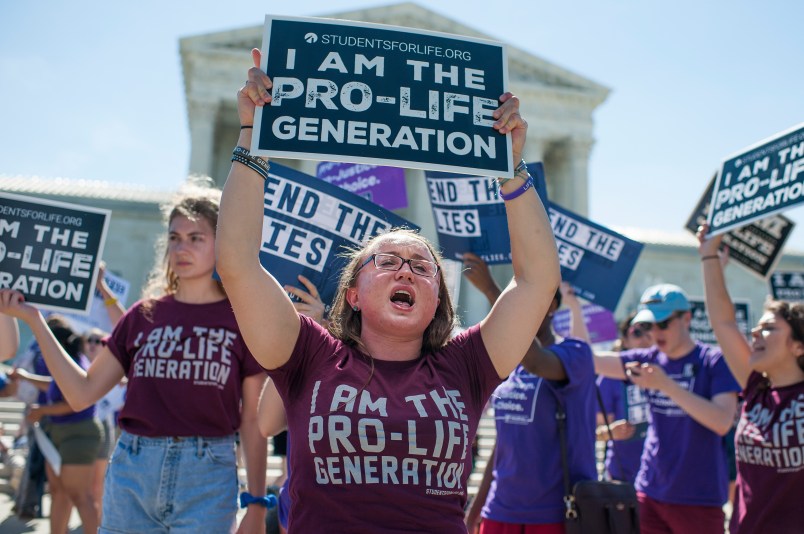The anti-abortion activists who spent big to help former President Trump put three justices on the Supreme Court will finally get to see the value of that investment.
The Supreme Court announced Monday that it was reviewing a legal challenge to Mississippi’s ban on abortions after 15 weeks of pregnancy. An appeals court previously struck the ban down.
In an order, the court said it was considering only one of the three questions Mississippi had asked the justices to review in its request that they reinstate the ban: “Whether all pre-viability prohibitions on elective abortions are constitutional.”
Though the justices have sought to limit the scope of the case, it still presents an opportunity for the court’s newly-emboldened conservative wing to rewrite the jurisprudence of abortion law and open the door to a flood of new restrictions on the procedure.
In granting the case, the Court teed up the possibility that the conservative majority will chip away at or eliminate altogether the line drawn by the landmark 1973 decision Roe v. Wade protecting a women’s right to an abortion before the fetus was viable.
The anti-abortion group Alliance Defending Freedom said in a statement that it was “glad” the court was taking up the case. It claimed that “‘viability’ has never been a legitimate way to determine a developing infant’s dignity or to decide anybody’s legal existence.”
The move to take up the case is the most significant step the court has taken on abortion since the confirmation last October of Justice Amy Coney Barrett, Trump’s third appointee to the high court. She replaced the late Justice Ruth Bader Ginsberg, a champion of abortion rights.
The court sat on Mississippi’s request to take up the case for several months, fueling speculation about what the reconfigured court might do or not do on the issue.
Before Coney Barrett joined the court, Chief Justice John Roberts joined the liberals in essentially holding up the status quo around abortion law in what was the last major abortion case before the court. That 2020 case asked the court to revisit at 2016 decision that struck down abortion clinic regulations that appeared aimed at closing clinics rather than protecting women’s health.
While Roberts voted in favor of the restrictions in 2016 (the liberals then had the vote of Justice Anthony Kennedy), he sided with the liberals in the 2020 case.
But Coney Barrett’s addition to the court means that Roberts will no longer be the deciding vote on the issue. Perhaps encouraged by the jerk to the right that the court has taken with her confirmation, 2021 brought another slew of restrictive abortion measures at the state level.
If the court affirms Mississippi’s 15-week ban, the recent surge in restrictions would only be the beginning.
“Alarm bells are ringing loudly about the threat to reproductive rights,” Nancy Northup, the head of the Center for Reproductive Rights, said in a statement.
“The Supreme Court just agreed to review an abortion ban that unquestionably violates nearly 50 years of Supreme Court precedent and is a test case to overturn Roe v. Wade.”



